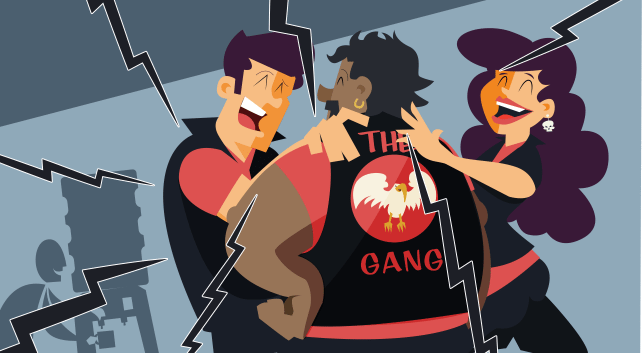- leadership
- Blog post
Team Dynamics: Break Up the Get-Along Gang
Everyone wants to work in a place where people treat each other with respect. As a leader, that’s also what you want for your team. In addition to being the right thing to do, it’s good business: If people are constantly rude, condescending or just plain nasty to each other, how do you attract and retain quality workers? And how does anything ever get done?
All that being said, there is a downside to harmony.
When people start being too nice to their colleagues, they’re less willing to share important information with the team, suggests Jonah Sachs, author of the book Unsafe Thinking.
You’d think it would go the other way – that people on dysfunctional teams hoard information, because they don’t trust their colleagues or are looking for an advantage in the endless game of office politics.
That probably does happen. But on teams where positive relationships are the norm, people also withhold information – though for very different reasons.
Better to be liked?
The problem, writes Sachs, is that information challenging the group’s consensus can be very threatening to these relationships. The result is something that psychologists call “shared information bias.”
It’s not just that people don’t want to call out their friends. The decision to withhold information is often strategic: In feel-good organizations, it’s more important to be liked than to be right. Rewards and promotions tend to be based on relationships more than results, and people who are seen as disruptive can quickly get marginalized by the group – even if what they’re saying is true and important. Meanwhile, those who repeat and repackage the “conventional wisdom” are seen as more competent and more knowledgeable, studies show.
Too much harmony: an example
Imagine, for example, that a marketing team is discussing a potential new product. Everyone is coming up with reasons why it can’t miss. Jane recently came from another company that launched a similar product, and it failed miserably.
But as the newest person on what’s clearly a very tight team, Jane’s top priority isn’t to be right, or even to help the product be a success. Her main concern is to fit in. So she keeps her mouth shut.
Even worse, says Sachs, Jane will actually convince herself that her information wasn’t relevant anyway. “They do things differently here,” she thinks. “Maybe they know something I don’t.” Pretty soon, she too is a card-carrying member of the Get-Along Gang.
A too-nice culture, Sachs says, leads to poor decision making, less creativity and less risk-taking because information is limited. It also threatens diversity, because people get rewarded for conformity and penalized for being different. This type of bias is especially insidious: Nobody believes someone is being discriminated against because of their race or gender; it’s simply that the other person doesn’t seem to be able to “get with the program.”
Tone down the love fest
How can you disrupt shared information bias on your team?
Since the opinions that people will agree with are most likely to start at the top, Sachs says it’s up to leaders to set the right tone. For example:
- Before a meeting, ask people to write down important information they want to share, so they don’t self-censor themselves later.
- Specifically solicit contradictory or disconfirming information, especially from people who are lower on the totem pole (they have the most to lose from challenging the thinking of their “superiors”).
- Speak last in the meeting; otherwise your people are likely to adjust their thinking to align with whatever you say.
- And, finally, make clear to everyone that when it comes to raises and promotions, you care more about results than popularity.
Source: Sachs, J (2018). Unsafe Thinking: How to Be Nimble and Bold When You Need It Most (Da Capo Lifelong Books).

Get a demo of all our training features
Connect with an expert for a one-on-one demonstration of how BTS Total Access can help develop your team.



